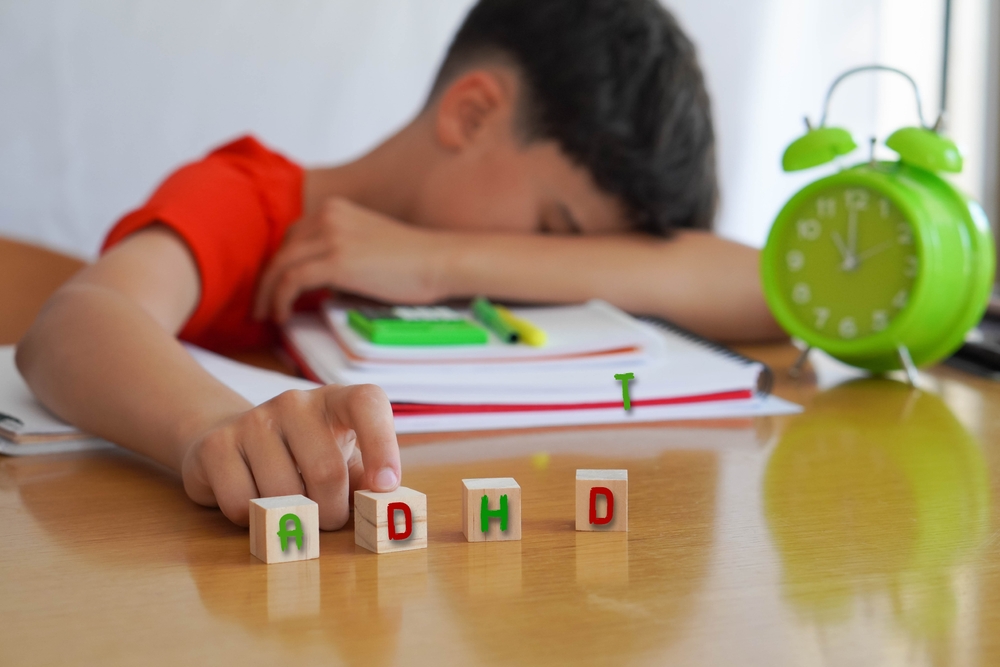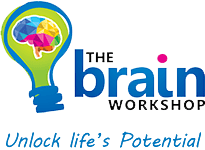In today’s digital world, constant screen use is increasingly normal, but it affects focus, memory, and mental clarity. This blog explores the connection between digital overload, brain rot, and ADHD, explaining how excessive screen time impacts cognitive function. Learn how overstimulation worsens ADHD symptoms and discover practical strategies for managing screen habits and improving attention.
Defining Digital Overload, Brain Rot, and ADHD
The modern world is increasingly shaped by digital technology, affecting how we work, communicate, and think. While these advancements offer convenience and connection, they also bring challenges.
The terms digital overload, brain rot, and ADHD often appear in discussions about attention, cognition, and mental well-being. Each concept reflects concerns about overstimulation, cognitive decline, and neurodevelopmental conditions. Understanding these terms helps contextualise their impact and origins, shedding light on the relationship between digital consumption and cognitive function.
Digital Overload
Digital overload refers to the excessive consumption of digital content, leading to cognitive fatigue and reduced attention span. It arises when individuals are overwhelmed by the sheer volume of online information, notifications, and digital interactions. This term emerged alongside the rise of the internet and mobile devices, particularly as social media and instant communication became integral to daily life.
The constant influx of information can impair focus, productivity, and mental clarity. Researchers link digital overload to stress, sleep disturbances, and reduced memory retention, making it a growing concern in an era of constant connectivity.
Brain Rot
Brain rot is an informal term describing perceived cognitive decline due to excessive exposure to low-quality digital content. It is often used humorously but reflects genuine concerns about the long-term effects of consuming short, fast-paced, and superficial media.
The phrase gained popularity with the rise of social media platforms, where bite-sized entertainment and algorithm-driven content dominate. Critics argue that endless scrolling and passive engagement weaken critical thinking, creativity, and deep focus. While not a clinical diagnosis, brain rot reflects societal fears about the diminishing ability to engage in deep learning and meaningful intellectual pursuits.
ADHD
ADHD, or Attention-Deficit/Hyperactivity Disorder, is a neurodevelopmental condition characterised by inattention, impulsivity, and hyperactivity. Unlike digital overload or brain rot, ADHD is a medically recognised disorder with genetic and neurological roots. However, discussions about ADHD have surged in the digital age due to concerns that constant digital stimulation exacerbates attention difficulties.
The term originated in medical literature, with early descriptions dating back to the 18th century, though formal recognition developed in the 20th century. While ADHD is distinct from digital overstimulation, excessive screen time may mimic or intensify symptoms, raising questions about its impact on cognitive development.
Understanding “Brain Rot”: How Excessive Screen Time Affects those with ADHD

Excessive screen time can significantly worsen ADHD symptoms by overstimulating the brain’s reward system, making it harder to focus on less stimulating tasks. Digital platforms, especially social media, video games, and short-form content, deliver constant dopamine hits. This can reinforce impulsivity, shorten attention spans, and make real-world tasks feel uninteresting or overwhelming.
Individuals with ADHD already struggle with delayed gratification, and excessive screen exposure can intensify difficulties with focus, task management, and emotional regulation.
“Brain rot” caused by screen time is an informal term describing cognitive fatigue and increased mental exhaustion from prolonged digital engagement. While not a medical diagnosis, it reflects real neurological effects. When people with ADHD engage in excessive screen use, they may experience worsened memory, heightened distractibility, and difficulties processing information.
Rapid, high-stimulation content can weaken the brain’s ability to sustain focus, leading to an increased reliance on external stimulation and difficulty switching between activities. This can make everyday tasks, like studying or working, feel impossible.
Excessive screen time impacts ADHD by reinforcing a cycle of hyperstimulation and inattention. The fast-paced nature of digital content conditions the brain to expect immediate rewards, making slower, more effortful tasks feel frustrating or unmanageable. This can increase procrastination, emotional dysregulation, and difficulty transitioning between activities.
Over time, excessive digital engagement can also contribute to sleep disturbances, which further impair focus and impulse control. To mitigate these effects, strategies to help retrain the brain can help; these include:
- Setting screen time limits
- Taking structured breaks
- Engaging in activities that promote sustained attention, like reading or exercise
Mindful technology use, combined with routines that encourage deep focus, can support better cognitive function and improve ADHD management.
Warning Signs of Digital Overload and ADHD in Children and Adults
Digital overload and ADHD can share symptoms, making it difficult to distinguish between the two. Excessive screen time can intensify ADHD-related challenges, such as impulsivity, inattention, and emotional dysregulation. Recognising the warning signs early can help individuals and families take proactive steps to improve focus and well-being.
Common warning signs in children and adults include:
- Frequent distractions and difficulty maintaining attention
- Increased forgetfulness in daily tasks or conversations
- Struggles with time management and procrastination
- Heightened irritability, restlessness, or mood swings
- Difficulty transitioning between tasks or stopping screen use
- Reduced interest in non-digital activities, such as hobbies or socialising
- Sleep disturbances, including trouble falling or staying asleep
- Increased anxiety or frustration when not using screens
- Impulsive behaviour, such as excessive scrolling or gaming despite negative consequences
- Diminished ability to focus on slow-paced tasks, like reading or studying
For children, digital overload may present as increased hyperactivity, difficulty following instructions, or emotional outbursts when screen time is restricted. Adults may experience chronic fatigue, poor work performance, and struggles with maintaining relationships. While ADHD is a neurodevelopmental condition that persists regardless of screen exposure, excessive digital consumption can amplify its effects.
To address these challenges, individuals can implement structured routines, screen-free activities, and time limits on digital use. Mindfulness practices, regular exercise, and cognitive training can also support focus and emotional regulation, helping to balance technology use with overall well-being.
Strategies for Managing Digital Overload and ADHD

Managing digital overload and ADHD requires a structured approach that balances screen use with activities that support focus, emotional regulation, and cognitive health. Since ADHD brains seek stimulation, reducing excessive screen time must be done gradually and with engaging alternatives.
Set Screen Time Limits: Using timers or apps to restrict usage can prevent overstimulation and encourage mindfulness. Research shows that structured screen breaks improve attention and impulse control.
Follow the 20-20-20 Rule: Every 20 minutes, take a 20-second break to look at something 20 feet away. This reduces eye strain and mental fatigue.
Engage in Physical Activity: Exercise increases dopamine and norepinephrine, neurotransmitters that support focus and impulse control in ADHD. Activities like walking, sports, or yoga help regulate attention and energy levels.
Use Structured Routines: Predictable daily schedules reduce decision fatigue and improve executive function. Morning and bedtime routines should include screen-free time to support focus and sleep.
Prioritise Offline Hobbies: Engaging in activities such as reading, art, or music strengthens attention span and reduces reliance on digital stimulation.
Practice Mindfulness and Deep Work: Techniques like meditation, breathing exercises, or the Pomodoro Technique help build sustained focus and reduce digital distractions.
By integrating these strategies, individuals can reduce digital overload while managing ADHD symptoms effectively, leading to improved concentration, emotional balance, and overall well-being.
When to Seek Professional Support for ADHD and Digital Overload
Professional support is recommended when ADHD symptoms or digital overload significantly interfere with daily life, relationships, or mental health. If difficulties with focus, impulsivity, emotional regulation, or screen dependency persist despite self-management strategies, seeking guidance from a specialist can help.
Children struggling with extreme hyperactivity, meltdowns, or difficulty following routines may also benefit from professional intervention. Therapies such as cognitive-behavioral therapy (CBT), medication, and executive function coaching can provide tailored support to improve attention, emotional resilience, and healthy technology habits.
Practical Advice from The Brain Workshop for Healthy Digital Habits
For expert guidance on digital wellness and ADHD management, visit The Brain Workshop. Explore our FAQs page for support, or stay informed with our events and insights from our team.
Learn about the effects of protein, coffee, energy drinks, and sleep on focus, as well as understanding the myths and facts around ADHD. Get practical strategies for making adjustments in the home, school, and workplace, and understand the steps to getting diagnosed, if you’re concerned about your attention span or motivation levels.
Concerned about digital overload affecting you or your child’s ADHD symptoms? Contact The Brain Workshop today for expert guidance and cognitive health support.






